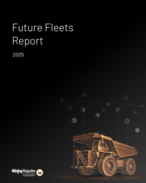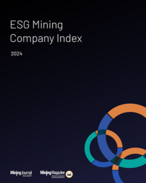This article is 11 years old. Images might not display.
For the six months to December, BHP’s coal division reported revenues of $US4.7 billion and profit from operations of $510 million. This compares favourably with the corresponding period in 2012, when coal made no contribution to profit, despite higher revenues of $4.9 billion.
“There is no better example of the renewed discipline that we are applying at an operational level than Queensland Coal, where our focus on contractor and maintenance costs significantly improved the profitability of the operation,” the company said.
“In this regard, BHP Billiton Mitsubishi Alliance unit cash costs declined by a substantial 25% during the period.”
Underlying EBIT for the half year increased by $431 million to $510 million. The continued recovery in profitability was underpinned by productivity-led volume and cost-efficiencies, which increased underlying EBIT by $779 million.
In total, lower prices reduced underlying EBIT by $611 million, net of price linked costs.
Fat Prophets mining analyst David Lennox told ABC television that he was surprised with the production performance of BHP Billiton’s coal mines and the increased volumes from its Queensland and New South Wales mines. The company is now less likely to mothball any more operations.
An extended outage at Dendrobium and a scheduled longwall move at West Cliff in the September quarter resulted in a 13% decline in Illawarra Coal production in the half year. Operations at Illawarra Coal are expected to return to normal before the end of the March 2014 quarter.
Metallurgical coal is well-positioned to achieve full-year production guidance, although the current wet season in northern Australia represents a key risk, the company said.
It remains confident of the medium-term outlook for met coal.
“With global growth rates expected to rise, demand for steel making raw materials from markets outside of China should also rise,” the company said.
“This will predominantly benefit metallurgical coal demand given the reliance of these markets on higher quality, imported product. Against this backdrop, the unsustainable nature of high cost North American exports and slowing supply growth from Australia should be supportive for metallurgical coal pricing in the medium term.”
BHP Billiton’s $845 million investment in Appin Area 9 in NSW – which maintains Illawarra Coal’s production capacity with a replacement mining domain and capacity to produce 3.5Mtpa of metallurgical coal – is on track for completion in 2016.
The Caval Ridge mine development is on schedule for first production in the first half of the 2014 calendar year with the ramp up to phase one capacity of 5.5Mt of premium hard coking coal expected by the end of the 2015 financial year.
“Our Queensland Coal business continues to perform strongly, however we have retained total metallurgical coal production guidance of 41 million tonnes for the 2014 financial year given the general uncertainty that exists as we enter the wet season,” the company said.
“Energy coal production guidance for the 2014 financial year remains unchanged at 73 million tonnes.”























